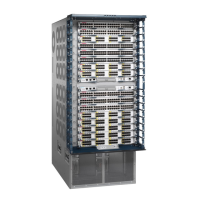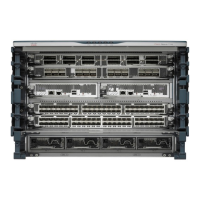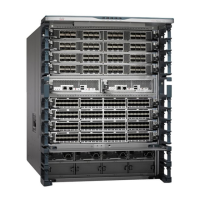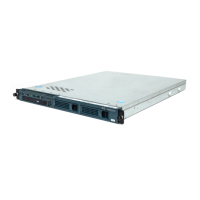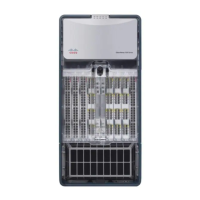2-94 Cisco 7000 Hardware Installation and Maintenance
Preparing Network Connections
Figure 2-19 Token Ring Network Interface Connectors, DB-9 and MAU Types
Token Ring Physical Connections
The term Token Ring refers to both IBM’s Token Ring Network, which IBM developed in the 1970s,
and to IEEE 802.5 networks. The IEEE 802.5 specification was modeled after, and still closely
shadows, IBM’s network. The two types are compatible, although the specifications differ slightly.
The IBM Token Ring specifies a star topology, with all end stations connected through a device
called a multistation access unit (MSAU). IEEE 802.5 does not specify any topology, although most
implementations are based on a star configuration with end stations attached to a device called a
media access unit (MAU). Also, IBM Token Ring specifies twisted pair cabling, whereas IEEE
802.5 does not specify media type. Most Token Ring networks use shielded twisted pair cabling;
however, some networks that operate at 4 Mbps use unshielded twisted pair cable. Table 2-13 shows
a comparison of the two types.
Table 2-13 IBM Token Ring and IEEE 802.5 Comparison
In the typical Token Ring network shown in Figure 2-20, lobe cables connect each Token Ring
station (TRIP port) to the MSAU (or MAU), and patch cables connect adjacent MSAUs (or MAUs)
to form one large ring.
Network Type Data Rates Stations/ Segment Topology Media Signaling
Access
Method Encoding
IBM Token Ring
network
4, 16 Mbps 260 shielded twisted pair
72 unshielded twisted pair
Star Twisted pair Baseband Token
passing
Differential
Manchester
IEEE 802.5
network
4, 16 Mbps 250 Not specified Not specified Baseband Token
passing
Differential
Manchester
H1350a
TRIP end
MSAU or
MAU end

